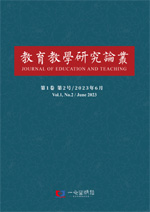本文旨在研究对外汉语教学中漫画元素的应用,并探讨其在提升学习效果和提高课堂活跃度方面的作用。漫画通过图像和插图的形式,能够直观地呈现语言和文化内容,帮助学习者更好地理解和记忆汉语知识。图像可以激发学习者的想象力,帮助他们建立与词汇、语法和句型之间的联系。有趣的故事情节、幽默的对话和夸张的表情,能够使学习者更加积极主动地参与课堂教学。通过漫画,学习者可以了解和感受到中国文化的独特之处,培养对中国传统和现代文化的兴趣和理解。漫画中的人物形象、社会风俗和文化背景等元素都能够帮助学习者更好地理解和融入中国社会。本文从结构上看,首先,引言部分介绍了对外汉语教学的重要性和漫画元素的潜力。其次,通过对问卷调查的分析,揭示了学习者对漫画教学的态度和看法。然后,结合可行性研究,提出了在对外汉语课堂中应用漫画元素的具体设计方案。最后,结论与讨论部分总结了研究结果,并探讨了漫画元素在对外汉语教学中的局限性和未来发展方向。
This paper aims to study the application of comic elements in teaching Chinese as a foreign language and explore their role in enhancing learning outcomes and classroom engagement. Comics, through their visual representation of language and culture, help learners better understand and memorize Chinese knowledge. The images stimulate learners’ imagination and help them establish connections between vocabulary, grammar, and sentence patterns. With interesting storylines, humorous dialogues, and exaggerated expressions, comics encourage learners to actively participate in classroom activities. Through comics, learners can gain an understanding and appreciation of the unique aspects of Chinese culture, and foster their interest and comprehension of traditional and contemporary Chinese culture. Elements such as character images, social customs, and cultural backgrounds depicted in comics facilitate learners’ understanding and integration into Chinese society. The structure of this paper begins with an introduction highlighting the importance of teaching Chinese as a foreign language and the potential of comic elements. Subsequently, an analysis of survey results reveals learners’ attitudes and opinions toward comic-based teaching. Based on the feasibility study, specific design proposals for incorporating comic elements into Chinese language classrooms are presented. The conclusion and discussion section summarizes the research findings and explores limitations and future directions for the use of comic elements in teaching Chinese as a foreign language. Through this study, we conclude that the introduction of comic elements in Chinese language instruction enhances learners’ interest and engagement while promoting their overall language and cultural competencies. Finally, the paper concludes with a final section emphasizing the significance of integrating comic elements into teaching Chinese as a foreign language and outlining future research directions and challenges.
Ⅰ. 引言
Ⅱ. 对外汉语教学与漫画 Ⅲ.问卷调查分析
Ⅳ. 课堂设计
Ⅴ. 结论与讨论
Ⅵ. 结语
